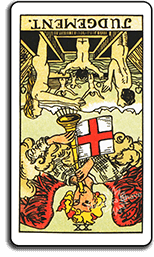
Johnson, Taft Stettinius & Hollister LLPĭavid M. Therefore, the Eighth Circuit reversed the bankruptcy court’s grant of summary judgment and remanded for further proceedings regarding whether the corporate veil can be pierced or whether there is independent tort liability. Thus, the Eighth Circuit declined to affirm on the alternative ground of claim preclusion. Further, the debtors previously failed to argue claim preclusion before the lower courts (despite knowing about the action for exception to discharge), and the debtors failed to demonstrate why claim preclusion should apply. But, the Eighth Circuit noted that it has denied claim preclusion when there are difficult questions including (1) whether to treat the debtors as a party to a proof-of-claim dispute when they did not appear at the proof-of-claim proceeding, or (2) whether the debtors even could be parties-in-interest to a claim objection when their estate was insolvent and the debtors could not benefit financially. The debtors also argued the Eighth Circuit could affirm on the alternative ground of claim preclusion because the bankruptcy court disallowed the plaintiff’s claim. As such, the Eighth Circuit held that the bankruptcy court improperly granted summary judgment. The debtors did not address this alternative ground for a valid claim.

The Eighth Circuit rejected this argument because liability can be imposed against an officer or director of a company based on a tort under applicable state law. On appeal, the debtors argued that the Eighth Circuit should affirm given the plaintiff cannot pierce the corporate veil to hold the debtors personally liable. The BAP affirmed and the plaintiff appealed. The debtor moved for summary judgment in the adversary proceeding on the same grounds. The plaintiff did not respond and the bankruptcy court sustained the trustee’s objection. The trustee objected to the claim on the grounds that the claim alleged a corporate debt of the business rather than a personal debt of the debtors. When the trustee gave notice of assets, the plaintiff filed a proof of claim. to the extent obtained by-false pretenses, a false representation, or actual fraud, other than a statement respecting the debtor’s or an insider’s financial condition.” The plaintiff sought exception to discharge pursuant to 11 U.S.C. The plaintiff obtained default judgment against the corporation for damages due to misrepresentations made by the debtors that suppliers and subcontractors had been paid. Suppliers to the debtors’ business filed construction liens for amounts owed. The debtors closed their business and filed a voluntary petition under chapter 7. The debtors owned a corporation hired to do electrical projects for the general contractor plaintiff. 22, 2022), the Eighth Circuit reversed the bankruptcy court’s grant of summary judgment given the bankruptcy court’s failure to address alternative tort claims. Because it is easier to recruit evidence supporting familiar events than unfamiliar events, this skewed attention causes both familiar events and their complements to be judged more likely, on average, than unfamiliar events and their complements.In Lund-Ross Constructors, Inc. The data are consistent with a contingent weighting model in which the process of judging relative likelihood biases attention toward evidence supporting the target hypothesis (and away from evidence supporting its complement).

These patterns can be construed as belief reversals, analogous to the preference reversal phenomenon in decision making. Moreover, a greater proportion of subjects rate the more familiar event as more likely than assign a higher probability to that event. Further studies demonstrate that the familiarity bias is less pronounced among subjects who are asked to judge the probability of each event rather than which event is more likely.

Similarly, we observe that subjects are biased to view less familiar events (and their complements) as less likely than more familiar events (and their complements). The result is that the lower court which tried the case is instructed to dismiss the original action, retry the case or change its judgment. In particular, respondents are biased to view more familiar events (and their complements) as more likely than less familiar events (and their complements). the decision of a court of appeal ruling that the judgment of a lower court was incorrect and is therefore reversed. This principle is violated in several surveys in which we asked people to assess the relative likelihood of familiar versus unfamiliar events. Probability theory assumes that belief orderings over events and their complements should mirror each other (i.e., P( A) ≥ P( B) iff P ( not-A) ≤ P( not-B)). People are often called on to make an assessment of the relative likelihood of events (e.g., which of two investments is more likely to outperform the market?) and their complements (which of the two investments is more likely to perform no better than the market?).


 0 kommentar(er)
0 kommentar(er)
